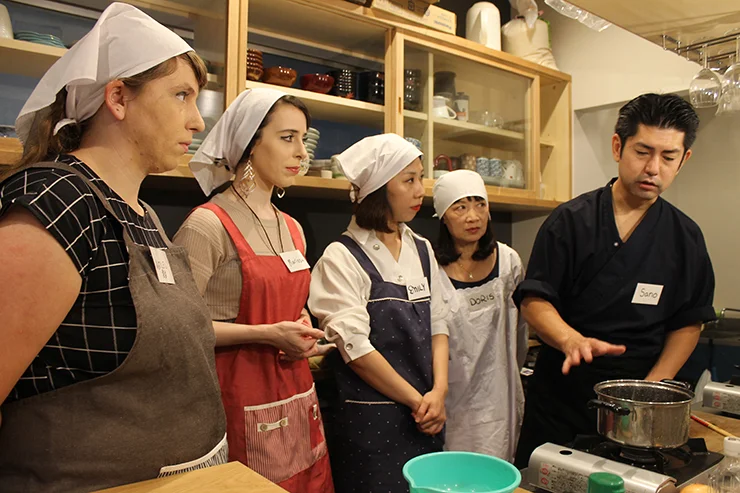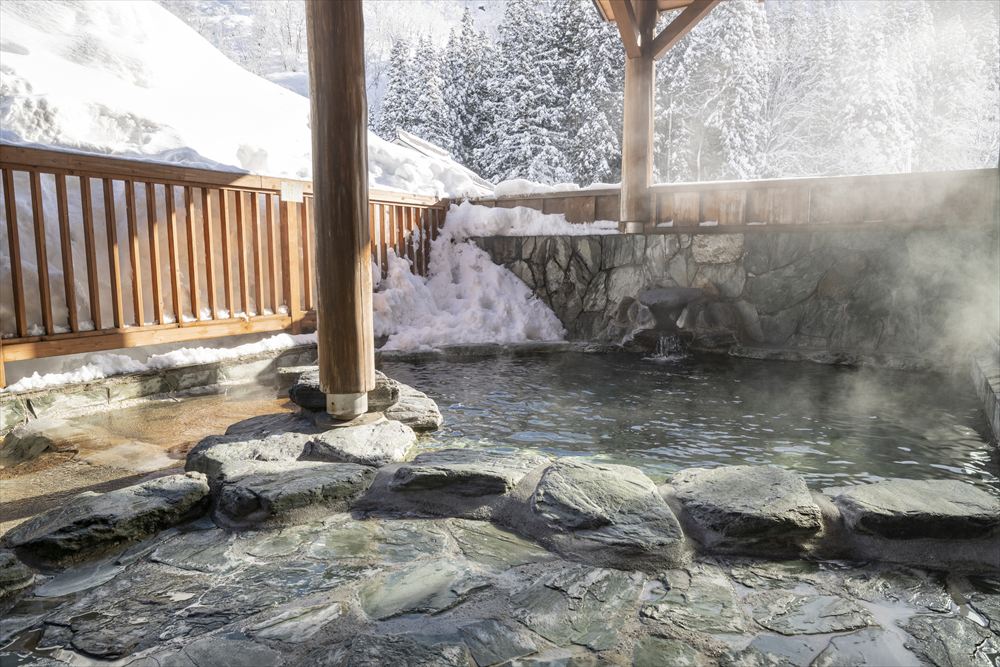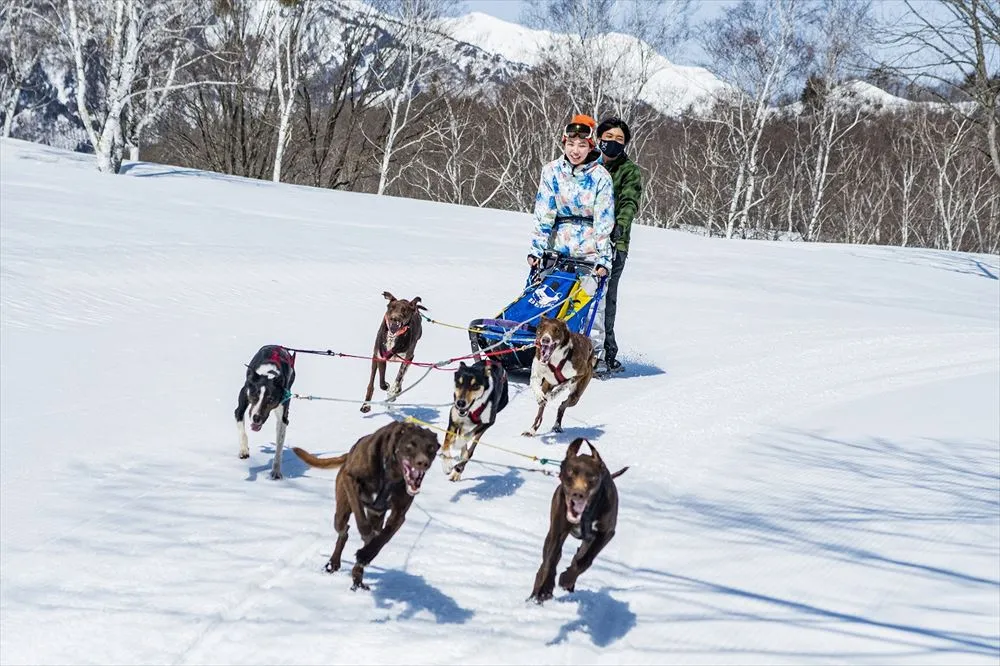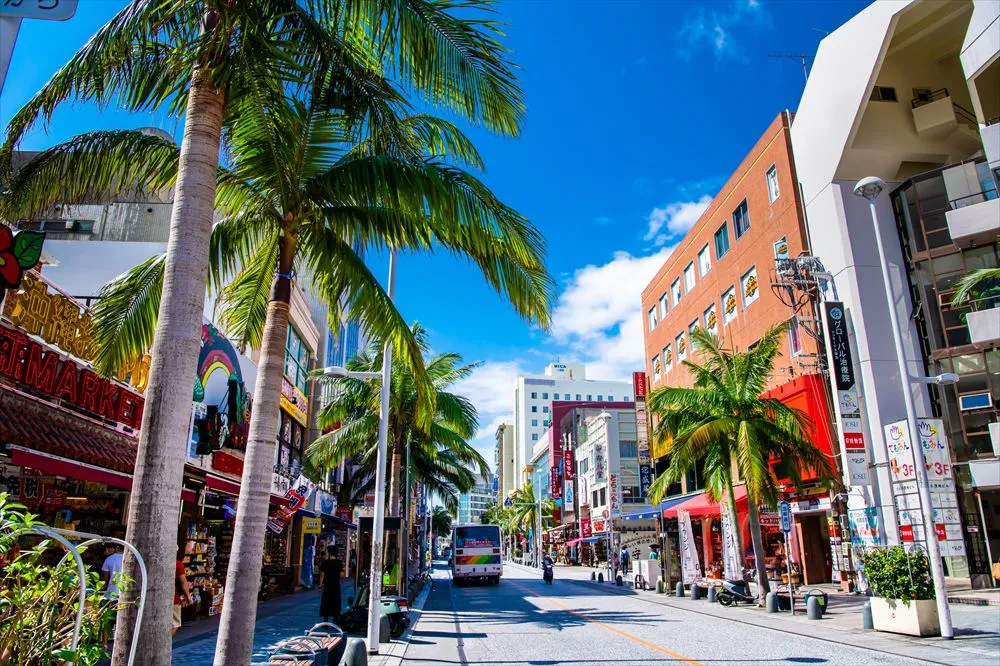Have you heard of “sasami zushi”? It is a local sushi dish from the Myoko area in Niigata Prefecture. Rice is stuffed in a sasa (bamboo) leaf, which is folded into the shape of “mino,” a farm tool which is used as a basket, and topped with various ingredients such as wild vegetables.
Enjoy making “sasami zushi” in Myoko, Niigata Prefecture
Enjoy making “sasami zushi” in Myoko, Niigata Prefecture

I joined the “sasami zushi” making class at an inn called “Fujimi-so” in Myoko. Surrounded by mountains, it was just like a place I visited for summer camp when I was a student, offering a nostalgic atmosphere. In fact, I heard that the inn hosts students for summer camp from one of the universities famous for a marathon relay race. I also heard that some people from publishers stay for a long time to write. At night, the area is very quiet, so I am sure that you can enjoy time alone in a relaxing atmosphere.
I was welcomed by the owner and his wife, then we started making “sasami zushi.” First, we prepared leaves. Hold a leaf horizontally with the rough side up and fold a small portion of the top edge to the back. Lastly, roll up the leaf so that both edges meet at the center. This was very tricky. The owner kindly said that I would be able to make ones in a good shape after the third try or so. So, I kept trying. With advice that by folding the tip into a triangle shape it will look nice and it will be easier to put rice and ingredients in it, I managed to make some containers with leaves.








On that day, the 5 ingredients we used were red snow crab, Alaskan pink shrimp, zenmai (Asian royal fern, a kind of wild vegetable), nemagaridake (dwarf bamboo), and kinshi-tamago (shredded egg crepes). Various ingredients could be used, such as tuna, sansai (wild vegetables), flaked salmon, dembu (flavored white fish flakes), and fuki-miso (Japanese butterbur buds with miso). I heard that canned tuna is popular among foreigners. The owner selects ingredients for guests based on their nationality and age; namero (minced fish mixed with some spices and seasonings) with horse mackerel or sardine for older guests, while seafood for younger ones. What hospitality! I had never heard of nemagaridake, which turned out to be bamboo shoots locally grown in Myoko City.

After preparing the containers, I started filling rice in them. Here was a tip, too. By flattening the rice with the back of a spoon, it would be easier to place ingredients. It will also look better in a photo if you push rice and ingredients into the back. I greedily put lots of rice, but I was told that it would be better to put a smaller amount of rice to make it look better. I heard that it would also look better if the leaf container is slimmer after rice and ingredients were loaded. You would never know unless you try. I thought that the final shape reflects the personality of the person who made it. Even if you use the same ingredients, the final product will look different with different orders and amounts of the ingredients. So, it should be more fun to make it with your family and friends. The owner also told me that the best part of making sasami zushi is to be able to make your own original one.







The process was easier than I expected! Now the sasami zushi is finished! After taking photos with original sasami zushi in my hand, I enjoyed eating them. With the photogenic colorful ingredients, I thought it was too beautiful to eat. Along with my original sasami zushi, I had miso soup with Alaskan pink shrimp and pickled sansai.


It was a fun time to enjoy sasami zushi while listening to the owner talking about recommended sake. Fujimi-so hosts lots of foreign tourists visiting there for making sasami zushi. The owner told me that his guests enjoy dishes with local ingredients along with sake and start singing karaoke, leading to a big party! His fun talk and warm personality is also attracting people to Fujimi-so.


As the temperature goes down to 20 degrees Celsius below zero in winter in this area, you can enjoy not only skiing but also making igloos and snowshoeing. I heard you can dive from a gondola into powder snow! For many visitors who visit this place via Nagano, there is a courtesy car service from Joetsumyoko Station. This time I didn’t have enough time due to my Shinkansen schedule back to Tokyo, but I want to visit onsen in the area to relax next time.
Fee: 2,000 yen (tax not included) *with miso soup. 1,700 yen (tax not included) for a meal only.
| Regular holiday | Open every day (by reservation only) |
| URL | https://www.myoko.tv/spots/183 |







